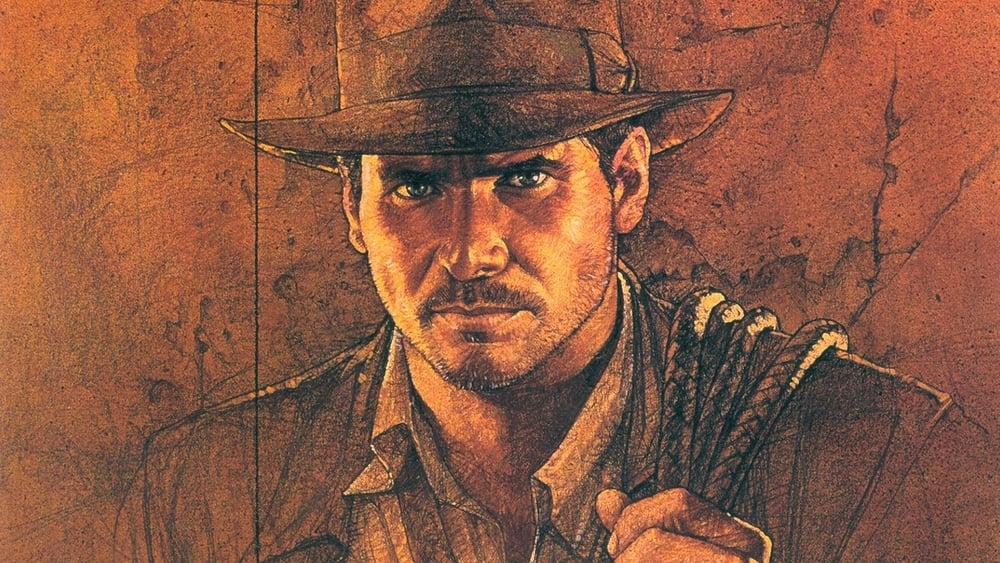I feel confident in saying the “Indiana Jones” films are my favorite blockbuster series. The original four (well, really three) films are ones I return to more often than almost any other. In the lead-up to the release of “Indiana Jones and the Dial of Destiny,” the fifth installment in the series, I decided to take a look back at the rest of the films to be reminded what great blockbuster filmmaking looks like.
Raiders of the Lost Ark (1981)
I don’t know if I can definitively say I have a favorite movie. But when asked the question, I tell people “Raiders of the Lost Ark”. It is my favorite film by my favorite filmmaker. I saw it for the first time when I was 8 and have watched it more times than I can count. My love for this film goes deeper than nostalgia, however. As I’ve gotten older and learned more about film and filmmaking, I am blown away more by Steven Spielberg’s magnificent directorial skill than Lawrence Kasdan’s tight, thrilling script. The dynamism of his action sequences, the grace with which he moves the camera, the precise blocking of his actors. If it’s not Spielberg’s most meaningful film, it is undoubtedly his best directed and the one in this series I return to most often.
Indiana Jones and the Temple of Doom (1984)
Who knew Hollywood blockbusters were allowed to be this mean and nasty? Well, maybe they weren’t given the return to a more Raiders-esque formula in later installments and the MPAA’s introduction of a new PG-13 rating due to how over-the-top violent this film was. But frankly, I love that about “Temple of Doom.” It feels like such a big swing in retrospect, and while the film isn’t as tight or consistently thrilling as “Raiders” or “Last Crusade,” the highs are remarkably high. The completely irrelevant opening credit musical sequence is dazzling and shows off Spielberg’s talents as a musical director long before his version of “West Side Story.” The mine cart chase in the film’s third act is as exciting a chase sequence as any in this series and one that appears to pay homage to the terrific Buster Keaton classic “The General” through some of its gags and situations. Unfortunately, it’s aged far worse than its counterparts thanks to the awful racial stereotyping on display, and it makes the film more uncomfortable than its horrific violence ever could. It’s a significant mark on what is otherwise another Spielberg masterwork of spectacle.
Indiana Jones and the Last Crusade (1989)
Would be a lazy rehash of “Raiders” if not for the addition of the excellent, moving father-son storyline, which puts it nearly on par with the first film in the series. Harrison Ford and Sean Connery have remarkable chemistry, and the stubborn, suck-in-his-ways father and the hungry, ambitious son dynamic of their relationship feels far more meaningful viewing the film again post-“The Fabelmans.” Spielberg’s latest autobiographical tale looms over the entirety of “Last Crusade” more than any other in the franchise. The opening young Indy sequence recalls Speilberg’s childhood spent as a boy scout in Arizona. The scene where Indiana Jones runs into Adolf Hitler at a Nazi book burning and gets the grail diary signed recalls the way Sammy Fabelman uses film to manipulate the image of a bigot (in “Last Crusade” it is using him for a joke, in “The Fabelmans,” creating an image that he could never live up to) to try and steal back some power from them — although, obviously Hitler and the bully in “The Fabelmans” are nowhere near equal levels of evil, but the essence of what Spielberg is doing with both of them is somewhat similar. And then, of course, the final shot of the heroes riding off into the sunset with the horizon line at the bottom of the frame, recalling the advice he received from John Ford as he was entering the industry. It may not feel as fresh as “Raiders” does, but it feels a lot more meaningful in the arc of Spielberg’s career.
Indiana Jones and the Kingdom of the Crystal Skull (2008)
I revisited “Crystal Skull” for the first time in years wishing to come away thinking it was some sort of lost masterpiece, that the hate this film recieved 15 years ago was overblown. Unfortunately, it was just as bad as the last time I watched it. The pacing feels disjointed, it isn’t nearly as funny or exciting as the previous three films, and the ideas dealing with the Red Scare era are not meaningfully explored. I think the “believability” argument against it (specifically concerning the nuclear bomb fridge escape) is ridiculous given that events that transpire throughout the series have never really been particularly believable but I do see why people say that. At least when something in one of the original trilogy is unrealistic, the tactile nature of the practical effects at least makes it somewhat more believable. But “Crystal Skull,” particularly once the film gets to the jungle in its final act, turns into digital sludge, awful to look at and destroying any suspension of disbelief the viewer has.

